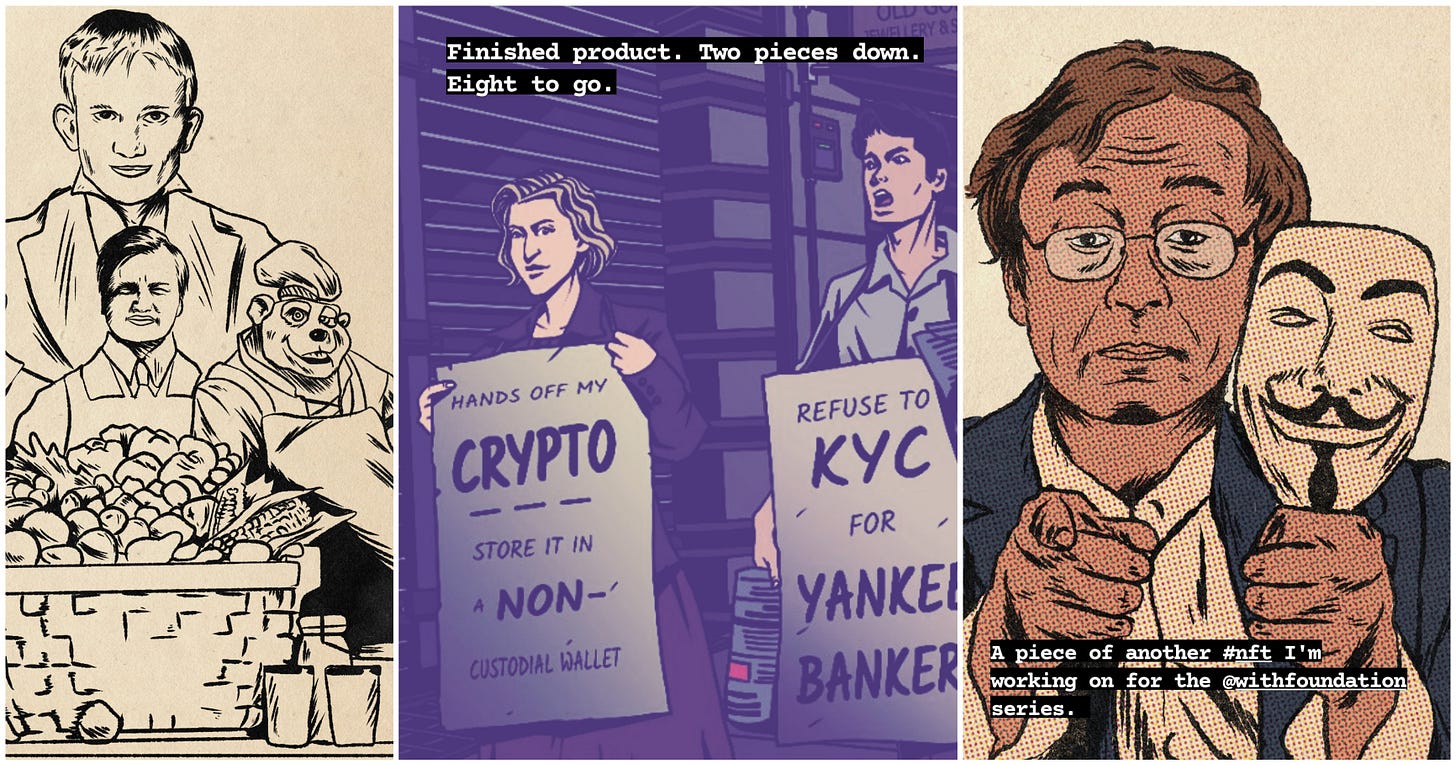Q: What's the difference between sidechains, rollups, and merge mined coins? [Free, #29]
We've been focusing on consensus mechanisms and mining concepts this month. Today's issue wraps that up by explaining the concepts behind the terms "rollups, merge mined coins, and sidechains."
Well hello there, my friend!
Today’s post is going out a day late because I’ve been dealing with automotive issues all week long (main cars in the shop AND backup vehicle on the fritz as well!)… all while I have perhaps the biggest workload and heaviest set of commitments I’ve had in months. Hopefully by next week I’ll be caught up; a thousand thanks for your patience with my delay.
Glad to see you back here again! This week is our last week (for now) focusing on mining and consensus techniques in blockchain, though almost certainly not the last time we talk about it ever.

We’re focusing on three specific things: Merged Mining, Sidechains and Rollups. This may seem like three disparate topics, but because this series is foundational knowledge, I picked these three things because they’re all relevant to very large blockchains and cryptos you’ve likely heard about: Dogecoin, Litecoin, Polygon and Optimism.
By way of update, we’re getting closer to a completed series for my art NFT project. Still don’t have a title for it, but I do have a couple of preview images! Right, I’m drawing a lot of inspiration from wartime propaganda poster and protest images as well as well-trodden cypherpunk cultural memes and themes. I look forward to launching it soon! Reply to the newsletter today if you’d like more information as we get closer to release.
Thanks for your support!
As always for those who are, thank you for being a subscriber to my newsletter! Your support makes all this possible. If you think you know someone who’d benefit from this issue, feel free to forward them this email!
If you’re someone who got this email via forward, use the following link to try us out for another two weeks, free!
Blockchain Bulletin
Robinhood goes all in on crypto with wallet announcement. Online stock trading app Robinhood announced that it’s now beta testing a cryptocurrency wallet that will launch in 2022 that will allow users to hold crypto, reported CNet.
China’s central bank bans all cryptocurrency transactions. The central banking authority of China renewed talks that all cryptocurrency transactions in the country are illegal, redoubling crackdowns on bitcoin and the market (yet again) reported CNBC and other news organizations.
Splinterlands becomes most-played blockchain game in milestone ranking. Splinterlands NFT trading card game hits a groundbreaking record as it reached over 260,000 daily users. This is an unprecedented number of accounts for any game and makes it first in terms of ranking, reported CoinQuora.
Blockchain Behind the Scenes
Dapper Labs rakes in $250M in new funding. Dapper Labs, the company behind NBA Top Shot and CryptoKitties, raised $250 million in funding to expand its nonfungible token platform capabilities such as the Flow blockchain and other projects.
Solana blockchain explains ‘network outage’ in overview. The Solana blockchain had a network stall occur during midweek and went offline for 17 hours, no funds were lost, and the network returned to full functionality within 24 hours.
Blockchain Deep Dive: What are Merged Mined Coins, Sidechains, and Rollups?
Merged Mining: This concept plays a key role in the security and consensus mechanism for Dogecoin (in conjunction with Litecoin).
Merged mining is a process for cryptocurrency miners that lets them garner additional returns without additional resource investment.
This is done by letting the miner secure more than one blockchain at a time.
Essentially, every hash a miner contributes to the security of the chain works to the benefit of the both with this process.
Sidechains: Many of the new Turing-Complete blockchains are technically sidechains to Ethereum, providing layer-2 scalability for Ethereum without having to re-invent the wheel when it comes to mining or staking.
Sidechains are an interesting concept that have been talked about for a very long time, but haven’t really seen a ton of implementations until very recently.
These two chains will have what’s called a “two way peg” to one another.
These two chains do not need to have the same algorithm or even the same consensus mechanism to be interoperable, as long as their chains are pegged and compatible.
In general, a sidechain is a term for a blockchain that can run in parallel to an existing chain for the purposes of adding functionality or throughput to an existing blockchain.
Rollups: This is a relatively new term for a class of blockchain scaling solutions that have emerged in this era of high fees on Ethereum (mostly) and other Turing Complete blockchains. This tends to refer to solutions distinct from sidechains, but sometimes not entirely dissimilar.
Rollups are a hot topic right now.
This umbrella term is distinct from a sidechain in that where a sidechain connects to a mainchain through two-way pegged assets, a rollup is entirely dependent on the main chain for committing assets and changes.
Similar to how a sidechain bridge works, there are smart contracts on the layer one solution that act as the data oracle for all interactions in the rollup layer.





